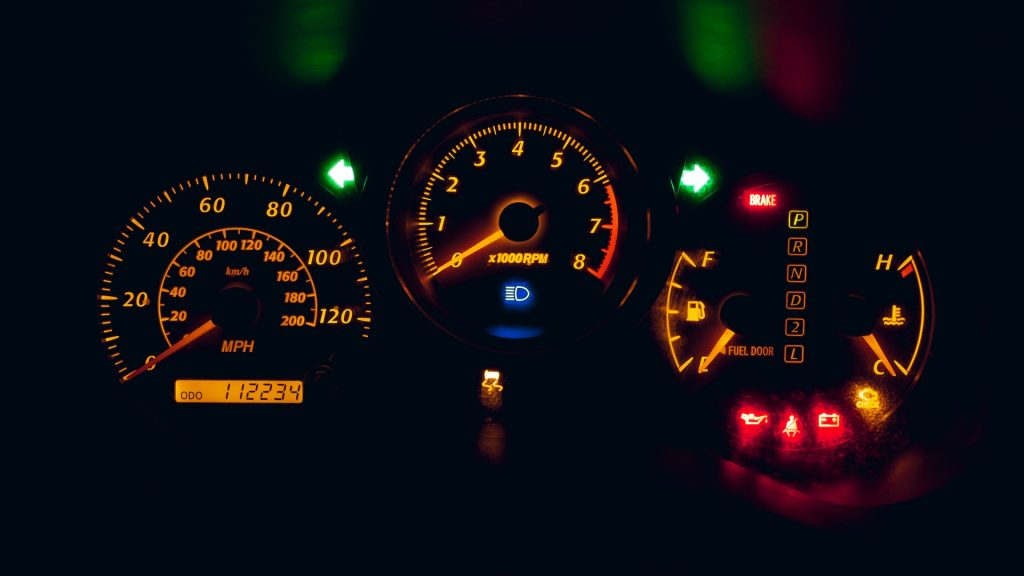From the simple “passenger door open” light to the terrifying “check engine” problem, your vehicle’s warning lights are the primary way it tells you about problems, big or small. Whenever you power up your car, you cross your fingers that they all stay turned off. These lights can be difficult to decode – but you probably know it’s not a great idea to ignore them! Have no fear – whether it’s the engine service light or the oil pressure light that’s making you want to book a service pronto, our engine warning light guide will have you feeling much more reassured about it all!
Engine warning lights
As far as car dashboard symbols and meanings go, this is usually one of the most intuitive and straightforward. When the check engine light is illuminated, you’ll typically see a light in the shape of a simplified outline of an engine.
What could the engine light on the dash mean? Though most people consider the engine light on the dash one of the most menacing car dashboard symbols, the light itself could pose myriad meanings, from inane and minor to much bigger problems. It could be as simple as a worn solenoid, poorly fitting gas cap, loose wire, or something as severe as a catastrophic engine problem.
Should your vehicle’s engine warning light turn on while you are actively driving, yet you don’t hear any strange noises or notice anything else obviously amiss with your vehicle, don’t worry too much – but don’t ignore the check engine light completely! The thing to do is get your vehicle to a mechanic soon. Why not contact us? A qualified mechanic will use your vehicle’s On-Board Diagnostic (OBD) system to check the status of all the vital engine components. All modern, recently manufactured vehicles feature an OBD system. An OBD system makes finding the specific problem much more straightforward. After all, your check engine light could mean anything from a loose gas cap to a more serious engine problem.
Suppose your engine warning light suddenly turns on and is accompanied by strange sounds or erratic driving from your vehicle. In that case, however, you should immediately stop in a safe place. This indicates a very serious problem with your engine, which could cause permanent damage.
Engine coolant temperature
Another fairly easy-to-decipher symbol, your coolant temperature warning light, comes with another obvious meaning – your vehicle is running too hot. What could be causing this, though? Well, either your vehicle’s radiator is low on coolant, or you’ve got a broken water pump, burst or leaking coolant hose, or even radiator damage on your hands. All these issues are as severe as a blinking engine check light, so get your vehicle checked pronto if you see this light.
Battery
Jumper leads at the ready! The winking robot symbol – a simplified battery rectangle with a positive and negative terminal – may indicate an obvious issue. After all, your vehicle probably simply isn’t starting when you see this light! That said, if you see the battery light, but your vehicle still drives, don’t just assume everything is fine. Your vehicle could have a long-term battery issue or a problem with one of the many electrical components – the alternator, wiring, or anything else.
Oil pressure
This engine warning light features an old-fashioned oil can with a little oil drop dripping. Just like any other engine light on dash, this one also comes with many meanings. The oil pressure light could be warning you of anything from a leak in your vehicle’s engine to worn or damaged parts like a broken oil pump or blown piston ring.
If your engine’s dipstick corroborates that oil levels are indeed low, you top up the oil, and this turns the light off; great! But if this doesn’t work, book your vehicle in for a service to get the problem checked as soon as possible – your vehicle’s oil level is essential to keep you going.
Understanding these key engine warning lights is an essential skill for every driver. Identifying and addressing issues promptly can save you from expensive repairs and ensure your safety on the road. Remember to consult your vehicle’s manual or a trained mechanic if you need clarification on the meaning of a warning light. Stay informed and be proactive in maintaining your vehicle; you’ll have peace of mind when you hit the road!


Leave a Reply